The Crooked Timber of Auschwitz
On International Holocaust Remembrance Day—marked by the liberation of Auschwitz on January 27, 1945, a brief history of how it became the symbol of pure evil
Note: This column is excerpted from Chapter 6 of Denying History: Who Says the Holocaust Never Happened and Why Do They Say it?, published in 2000 by the University of California Press, 2nd edition 2009, and co-authored with Alex Grobman. For quotes and references in this excerpt see the extensive bibliography in the book.
Isaiah Berlin’s last book, The Crooked Timber of Humanity, was inspired by the German philosopher Immanuel Kant who, in one of the great one-liners of philosophy, summarized the history of civilization thusly: “Out of the crooked timber of humanity no straight thing was ever made.” The grain of the past, Kant and Berlin understood, is twisted and full of knots. Rarely do historical events of any magnitude or import match the linear progression of cardboard textbook histories. Instead, the past is quirky and nonlinear. So it is with Auschwitz, whose crooked history led it to become the deadliest site in the worst genocide in modern history.
From Euthanasia to Mass Murder
Long before prisoners were herded into gas chambers and killed with Zyklon-B or carbon monoxide gas, the Nazis had developed a program of systematic and secret murder of targeted peoples. It began with the sterilization programs of the early 1930s, evolved into the euthanasia programs of the late 1930s, and with this experience the Nazis were able to implement mass murder in the extermination camps from 1941-1945. As shocking as gassing masses of prisoners in a chamber seems, as psychologists know it is actually easy to get people to do almost anything when the steps leading to it are small and incremental. After murdering tens of thousands of “inferior” Germans, the idea of attempting to annihilate the Jewish people did not appear unimaginable. Once targeted peoples have been demonized, excluded, expelled, sterilized, deported, beaten, tortured, and euthanized, the step to mass murder is a small one.
Sterilization laws were passed in late 1933. Within a year 32,268 people were sterilized. In 1935, the figure jumped to 73,174, with official reasons given including feeblemindedness, schizophrenia, epilepsy, manic-depressive psychosis, alcoholism, deafness, blindness, and even malformations. So-called sex offenders were simply castrated, no fewer than 2,300 in the first decade of the program.
In 1935, Hitler told the leading Reich physician, Gerhard Wagner, that when the war began he wanted to make the shift from sterilization to euthanasia. True to his word, in the summer of 1939 the Nazis began killing physically handicapped children, then quickly moved on to mentally handicapped children, and soon after to adults with either handicap. The murders were initially committed through large doses of “normal” medication given in tablet or liquid form so as to look like an accident (families were notified of the death). If the patients resisted, injections were used. When the numbers chosen for death became cumbersomely large, however, the operations had to be moved into special killing wards instead of isolated units.
The process became so extensive that the Germans had to expand their operation by taking over an office complex set up at a stolen Jewish villa in Berlin, located at Tiergarten Strasse #4. Thus, the program became known as Operation T4, or just T4, the “Reich Work Group of Sanatoriums and Nursing Homes”. T4 doctors arbitrarily decided who would live and who would die with, among others, economic status one of the common criteria—those unable to work or only able to perform “routine” work could be put to death. Historians estimate that approximately 5,000 children and 70,000 adults were murdered in the euthanasia program prior to August, 1941.
As the numbers increased so too did the complications of murder on such a scale. Mass murder requires a mass murder process, and medication and injections did not suffice. The T4 physicians were aware of the fact that some accidental deaths and suicides were the result of gas from an automobile engine or a leaking stove. According to Dr. Karl Brandt, he and Hitler discussed the various techniques and decided upon gas as “the more humane way.” The T4 administrators set up six killing centers; the first established at an old jail building in the city of Brandenburg. Sometime between December, 1939, and January, 1940, a two-day series of gassing experiments was conducted and deemed successful. Thereafter five more killing centers were established, including one each at Grafeneck in Württemberg, Hartheim near Linz, Sonnenstein in Saxony, Bernburg in the Prussian province of Saxony, and Hadamar in Hessen. The gas chambers were disguised as showers, the “handicapped” patients herded in, and the gas administered. One observer, Maximilian Friedrich Lindner, recalled the process at Hadamar:
Did I ever watch a gassing? Dear God, unfortunately, yes. And it was all due to my curiosity….Downstairs on the left was a short pathway, and there I looked through the window….In the chamber there were patients, naked people, some semi-collapsed, others with their mouths terribly wide open, their chests heaving. I saw that, I have never seen anything more gruesome. I turned away, went up the steps, upstairs was a toilet. I vomited everything I had eaten. This pursued me days on end….
The gas was ventilated from the chamber with fans, the bodies were disentangled and removed from the room, the corpses marked with an “X” on their back were looted for gold in their teeth, then cremated. The entire process—from arrival at the killing center to cremation—took less than 24 hours, not unlike what was soon implemented in the larger camps in the East. Henry Friedlander, who traced this evolutionary process, concluded:
The success of the euthanasia policy convinced the Nazi leadership that mass murder was technically feasible, that ordinary men and women were willing to kill large numbers of innocent human beings, and that the bureaucracy would cooperate in such an unprecedented enterprise.
In the T4 killing centers we see all the components of the extermination camps like Auschwitz. Through time the Nazi bureaucracy evolved along with the T4 killing centers, setting the stage for the conversion of concentration and work camps into extermination camps. By 1941-1942, this was just another incremental step in the contingently evolving system that became the Final Solution.
The Contingent History of Auschwitz
On April 21, 1990, David Irving addressed a large audience at the Löwenbräu Hall in Munich, Germany, proclaiming in his inimitable style of self-assured truth-telling: “By now we know, and I am sure I don’t need to point this out as anything more than an aside, that there were never any gas chambers in Auschwitz.” But are there not extant gas chambers still there at the camp for everyone to see? Yes, Irving admits, but “we believe that, just as the gas chambers which the Americans put up here in Dachau [outside Munich] in the first few days after the war were fakes, those gas chamber facilities which tourists can now sightsee in Auschwitz were set up by Polish authorities after the Second World War.” Why? Irving completed the conspiracy theory: “The German taxpayers have had to shell out no less than sixteen billion Deutschmarks as a penalty for Auschwitz for a fake.”
Holocaust deniers assume that because historians have determined that Auschwitz ended up being an extermination camp that it must have been originally designed to be an extermination camp. Since the layout, design, and function of Auschwitz does not match the expectations one might have for a perfectly designed extermination camp, deniers then argue that it was not an extermination camp at all. This is a flawed argument because historical outcomes rarely match historical intentions. In particular, it is a flawed argument because Auschwitz was not originally designed to be an extermination camp.
The architectural historian Robert-Jan Van Pelt, in a brilliant essay entitled “A Site in Search of a Mission,” has demonstrated through a chronology of blueprints and architectural designs of Auschwitz, that modern myths about the camp have erased the historical contingencies of its origin and development:
Banished from the world of description, analysis, and conclusion, Auschwitz has become a myth in which the assumed universality of its impact obscures the contingencies of its beginning. I use the word myth in the sense that Barthes gave to it in his essay “Myth Today.” Mythification, he argued, occurs when language empties a narrative of its historical contingency to fill it with an unchanging nature. “In passing from history to nature, myth acts economically: it abolishes the complexity of human acts, it gives them simplicity of essences.” The result is an account of “blissful clarity” in which there are no contradictions because statements of fact are interpreted as explanations; “things appear to mean something by themselves.” Few events can rival the mythic power of “Auschwitz.”
In his essay, and even more poignantly in his 1996 book co-authored with Deborah Dwork, Auschwitz: 1270 to the Present, Van Pelt unravels the contingencies that constructed the necessity that became the Auschwitz we have come to know today. The problem is that we are trying to understand the early stages of Auschwitz by what now remains. The original intention of Auschwitz, however, was quite different. “Auschwitz was not preordained to become the major site of the Holocaust. It acquired that role almost by accident, and even the fact that it became a site of mass murder at all was due more to the failure to achieve one goal than to the ambition to realize another.” The focus on the final stage of Auschwitz as a killing machine has prevented us from understanding its contingent history, as well as how anyone could commit such a crime. Understood in historical context, however, we come to understand how Auschwitz and its operators evolved to assume the roles of mass murderers, as Van Pelt and Dwork so eloquently observe:
This almost comfortable demonization relegates the camp and the events that transpired there to the realm of myth, distancing us from all too concrete historical reality, suppressing the local, regional, and national context of the greatest catastrophe western civilization both permitted and endured, and obscuring the responsibility of the thousands of individuals who enacted this atrocity step by step. None of them was born to be a mass murderer, or an accomplice to mass murder. Each of them inched his way to iniquity.
Auschwitz, it seems, was to be a district capital, a center of mass industry, and a model city that would project the image of an ideal future city for the Thousand Year Reich. The Nazis believed that Poland was rightfully theirs and therefore they were “liberating” it. In an SS handbook entitled The Struggle for the German Eastern Border, SS men were told: “The German East was for centuries the German people’s space of destiny. It will remain so for the following centuries.” Concentration camps were originally designed as instruments of terror to control resistance to the Nazi Party (Dachau is the classic case), but in time as they evolved, they furnished labor for productive work, especially after 1939. (Before the war, the free labor of the camps would have competed with German businesses and thus increased unemployment, which went against Nazi policy.) When the war began, however, the camps took on two new functions: a source of labor and the housing of prisoners of war. And, with much of German productive labor on the fighting line, these two new functions blended into one, with prisoners providing the free labor.
In 1940, Himmler began to make plans for the future of Auschwitz. The industrial giant IG Farben would have a plant in Auschwitz, all Jews and Poles would be removed from the region, and Auschwitz itself would become “a paradigm of the settlement in the East.” Within two months, a master architectural plan was completed for the reconstruction and enlargement of the camp, that included an SS Garden City and a center for agricultural experimentation. Nestled at the confluence of three major rivers, Auschwitz was to be the model Aryan city. Van Pelt and Dwork detail this evolution in blueprints and plans, including the first master plan for the expansion of Auschwitz, the location of the IG Farben industrial area, the Nazi Party headquarters, and, of course, the concentration/labor camp. The plans are also in keeping with Nazi architectural aesthetics as envisioned by Hitler and his chief architects Paul Troost and Albert Speer.
These plans changed on Sunday, June 22, 1941, when the Nazis invaded the Soviet Union. Contingencies once again altered future necessities, and the crooked timber of Auschwitz took another twisted turn. With the initial successes of the Wehrmacht and the Luftwaffe, Russian prisoners of war came pouring into Auschwitz, suddenly transforming the camp into an instrument of war. Conditions were brutal and thousands of Russians died monthly from disease and starvation: in October, November, and December, 1941, 1,255, 3,726, and 1,912 died, respectively. Barracks were hastily thrown up to house the POWs, and new crematoria had to be added to dispose of the bodies. The model-city-turned-POW-camp was, de facto, rapidly on its way to becoming an extermination camp.
After the Russian armies began to hold the line against the Germans and it became clear that Operation Barbarossa—the German invasion of the Soviet Union—was going to become a protracted operation, Auschwitz was further expanded to house up to 100,000 prisoners, primarily for labor (German laborers were now being ground up in the German war machine and the concern for unemployment was no longer an issue). After Stalingrad and the turning of the tide in the East, the supply of free Russian labor began to dry up. Himmler needed a replacement and he found it in the Jews. The evolution of Auschwitz toward its final end as an extermination camp now took a dramatic leap.
At the Wannsee Conference where plans for the Final Solution were coordinated, SS-Obergruppenfuhrer Reinhard Heydrich declared that “Under appropriate direction the Jews are to be utilized for work in the East in an expedient manner in the course of the final solution. In large (labor) columns, with the sexes separated, Jews capable of work will be moved into these areas as they build roads.” Six days later, Himmler sent the following telegram to the Inspector of Concentration Camps, Richard Glücks: “As no Russian prisoners of war can be expected in the near future, I am sending to the camps a large number of Jews who have emigrated from Germany. Will you therefore make preparation to receive within the next four weeks 100,000 Jews and up to 50,000 Jewesses in the concentration camps. The concentration camps will be faced with great economic tasks in the coming weeks.”
Indeed they were. Three weeks later, the first transport of Jews arrived, whereupon the young and healthy were put to work and the old and infirm were gassed and cremated. When this procedure became cumbersome, given the confines of the camp’s original design, it was moved three kilometers away, from Auschwitz I to Auschwitz II, better known as Auschwitz-Birkenau, where new crematoria were constructed, and the killing escalated as the war intensified. Yet all the while, says Van Pelt, “the extermination of the Jews was meant to be a transient phenomenon in the history of the camp.” Plans were continued to convert the camp yet again after the war, but “that other future never materialized. Thus the name Auschwitz became synonymous with the Holocaust, and not with Himmler’s model town.”
Figure 1. Auschwitz-Birkenau photographed from 30,000 feet by allied bombers on August 25, 1944 on their way to bomb the nearby IG Farben industrial plant.
Figure 2. Aerial photograph of Crematoria II & III of Auschwitz-Birkenau. The shadows of the Zyklon-B gas induction vents can be seen on the top of the subterranean gas chambers.
Figure 3. Ground photograph of Crematoria II showing the Zyklon-B gas induction vents that cast the shadows seen in the aerial photograph in Figure 2.
Figure 4. The remains of Crematoria II of Auschwitz-Birkenau taken by the authors. (a) The undressing room (note the stairs down into the subterranean structure). (b) A possible hole through which the Zyklon-B gas was introduced into the subterranean gas chamber, on top of which was the induction vent seen in Figures 2 & 3. (c) The remains of the crematoria after the entire structure was destroyed by the Nazis shortly before the camp was liberated in January 1945. (d) Blueprint of Crematoria II. (e) The remains of the entire Crematoria II structure today (with tourists visiting the site) courtesy of the Holocaust History Project.
Figure 5. This photograph shows the burning of bodies in an open pit after gassing. A Sonderkommando (Jews forced to work for the Nazis) at Auschwitz-Birkenau took them secretly. Alter Fajnzylberg, another Sonkerkommando, described what happened: “On the day on which the pictures were taken we allocated tasks. Some of us were to guard the person taking the pictures. At last the moment came. We all gathered at the western entrance leading from the outside to the gas chamber of Crematorium V: we could not see any SS men in the watch-tower overlooking the door from above the barbed wire, nor near the place where the pictures were to be taken. Alex, the Greek Jew, quickly took out his camera, pointed it toward a heap of burning bodies, and pressed the shutter. This is why the photograph shows prisoners from the Sonderkommando working at the heap.” (In: Swiebock, T. 1993. Auschwitz: A History in Photographs. Bloomington: Indiana University Press)
Proving Gas Chambers and Crematoria Were Used for Genocide
Holocaust deniers claim that gas chambers were used strictly for delousing clothing and blankets, and crematoria were used to dispose of the bodies of those who died of “natural” causes in the camps. How can we distinguish between gas chambers used for delousing and gas chambers used for genocide? How can we prove that the bodies disposed of in crematoria were murdered and had not just died of so-called “natural” causes like disease, starvation, and overwork?
To find out, we went to Europe to conduct research at the camps, in particular Mauthausen, Majdanek, Treblinka, Sobibor, Dachau, Auschwitz, and Auschwitz-Birkenau, to see for ourselves just what evidence there is at the camps. But before examining the evidence we gathered at the camps, consider in general how we might prove through a convergence of evidence from various sources that the Nazis used gas chambers and crematoria for mass murder:
1. Zyklon-B Gas Traces—On the walls of the gas chambers at several camps are traces of the gas Zyklon-B, used to exterminate large numbers of prisoners.
2. Eyewitness testimony—Survivor testimonies, Jewish Sonderkommando diaries, and confessions of guards and commandants.
3. Written documents—Orders for Zyklon-B (the trade name of hydrocyanic acid gas), architectural blueprints, and orders for building materials for gas chambers and crematoria.
4. Ground Photographs—Not only of the camps, but also the secret photos taken of bodies burning, subsequently smuggled out of Auschwitz.
5. Aerial Photographs—Taken of Auschwitz showing prisoners being moved toward the gas chamber/crematorium complexes, matching those of ground photographs corroborating the structure of the gas chambers and crematoria.
6. The Camps—The extant ruins of the camps themselves, when examined in light of the above sources of evidence, reveal the homicidal use of both gas chambers and crematoria for the express purpose of exterminating large numbers of prisoners.
In all there were six extermination camps involved in the Final Solution, resulting in a total of approximately 3,062,000 killed:
Camp Number Killed Killing Method
Auschwitz-Birkenau, 1942-1944 1,100,000 Zyklon-B
Treblinka, 1942-1943 900,000 Carbon monoxide
Belzec, 1942 600,000 Carbon monoxide
Sobibor, 1942-1943 250,000 Carbon monoxide
Chelmno, 1941-1942 152,000 Carbon monoxide
Majdanek, 1942-1944 60,000 Zyklon-B/Carbon monoxide
What the Nazis learned in the T4 program, along with subterfuge and secrecy and the methods of mass murder, is that the public would not tolerate such activities on German soil. Thus, these six camps were located in the East, far from the watchful eyes of the German public and press. But the evidence to convict the murderers has not escaped history.






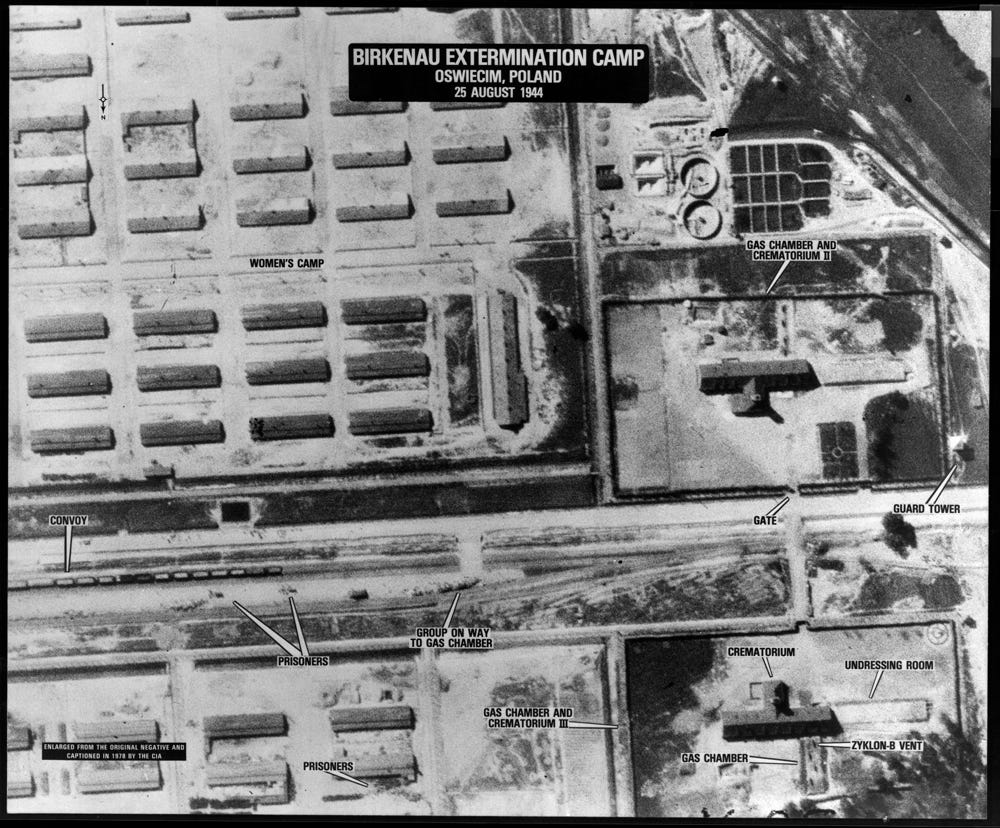

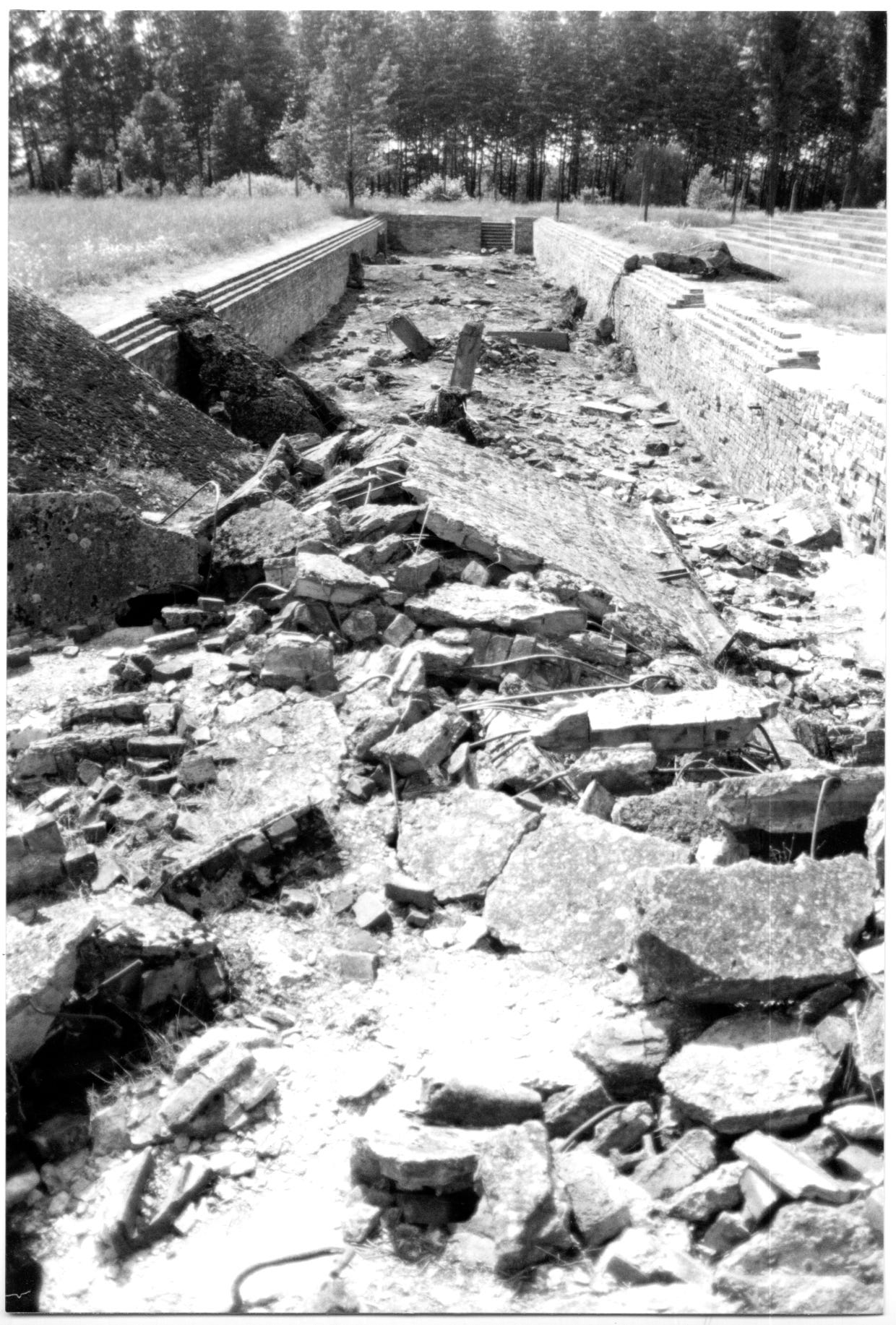

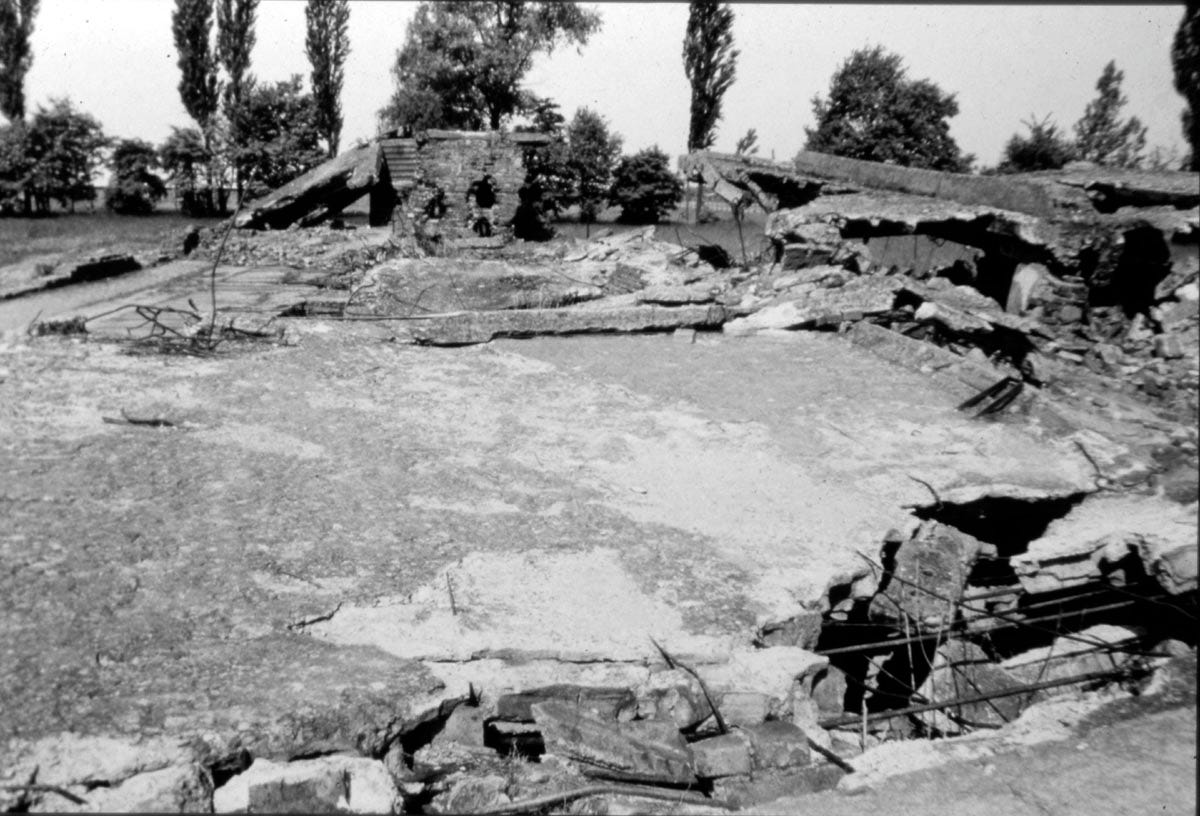

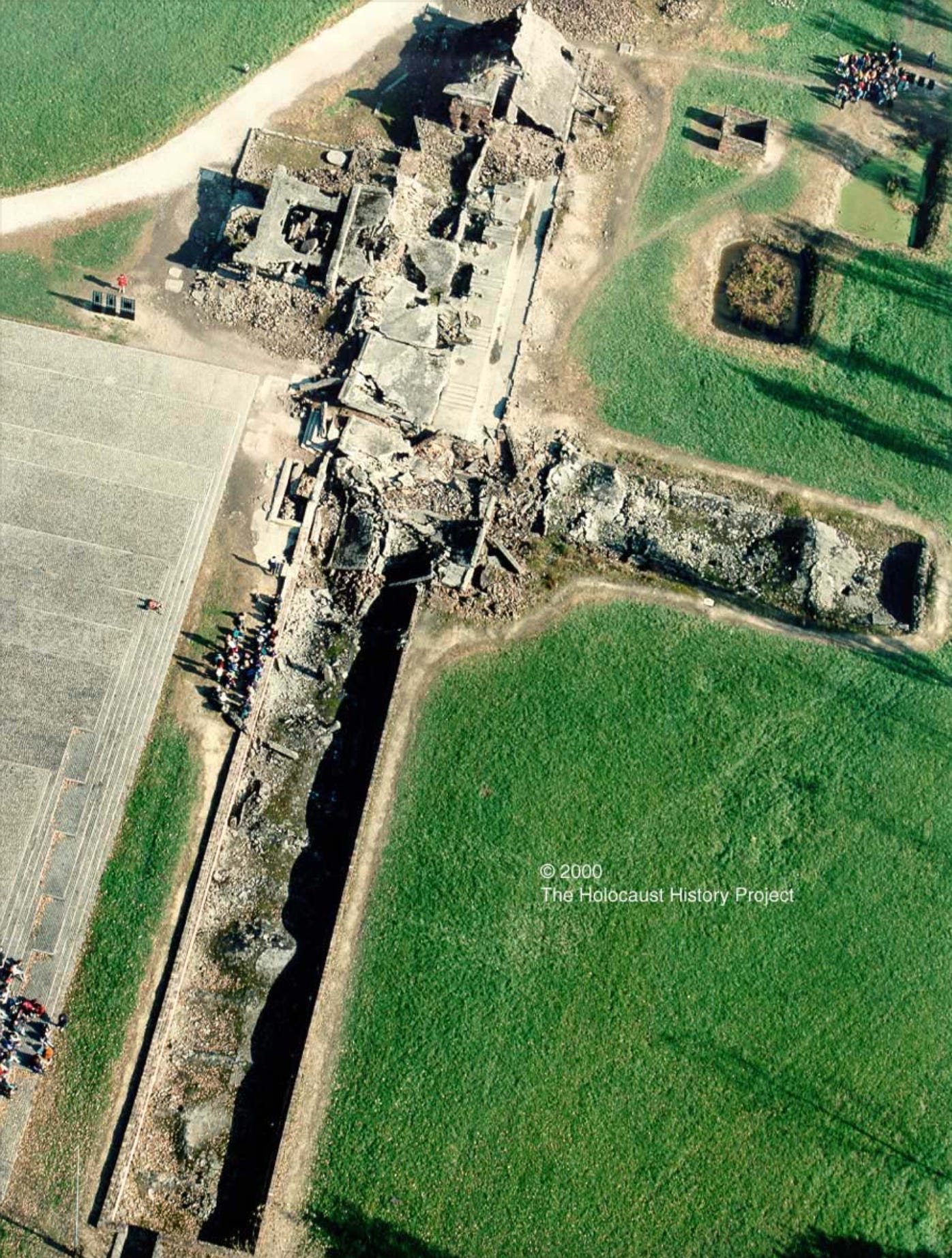
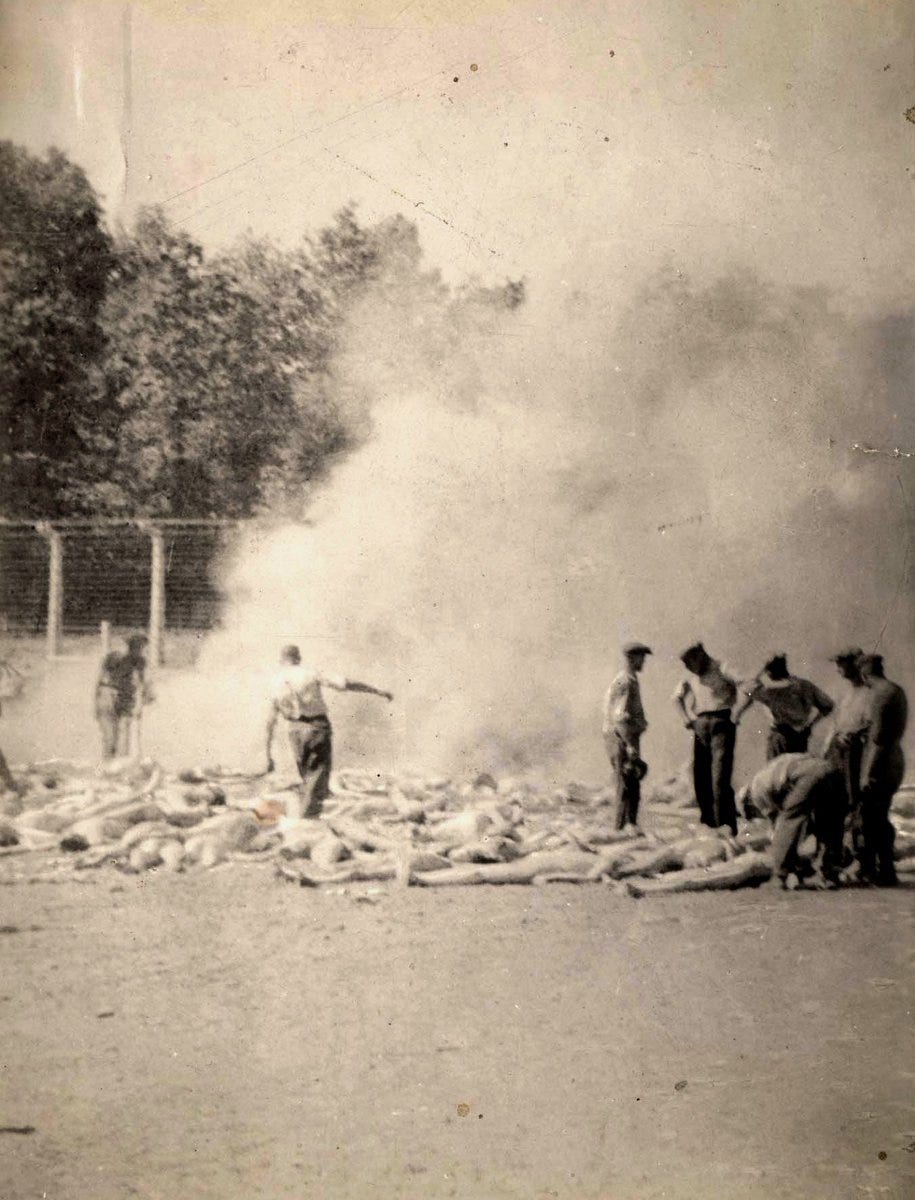
Delousing chambers had a Zyklon dispensing apparatus that safely opened the can, dumped it out on a tray, heated it and a fan circulated the gas through the chamber. After an hour or so, the gas was vented out of a chimney and the chamber was safe to enter. The alleged homicide gas chambers at Auschwitz did not use the specific Zyklon dispensers.
The so called homicide gas chambers were underground. The bodies were allegedly and impossibly hoisted up to the crematoria on a tiny hoist. It takes an hour to cremate a corpse, there’s no way they could cremate thousands of corpses per day.
Cremation pits were not possible because the area was like a swamp, high water table.
The gas chambers and 6,000,000 was atrocity propaganda.
" As shocking as gassing masses of prisoners in a chamber seems, as psychologists know it is actually easy to get people to do almost anything when the steps leading to it are small and incremental. After murdering tens of thousands of “inferior” Germans, the idea of attempting to annihilate the Jewish people did not appear unimaginable. Once targeted peoples have been demonized, excluded, expelled, sterilized, deported, beaten, tortured, and euthanized, the step to mass murder is a small one."
That describes EXACTLY what is happening today regarding the vaccine resisters. Small steps, one at a time, until the Final Sloution to vaccination refusal is within reach.